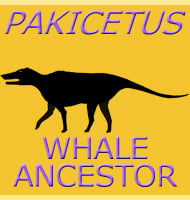Pakicetus
In Depth Pakicetus may well be the oldest known ancestor to modern whales, and along with other animals such as Ambulocetus, represent the group of terrestrial carnivores that began developing adaptations for a wholly aquatic lifestyle. Due to its transitional nature, it is hard to say with certainty how Pakicetus lived. Its ear structure is … Read more
